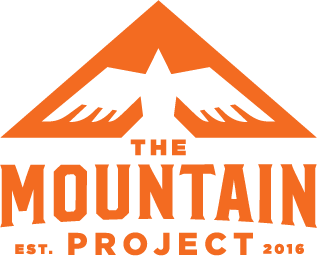Fueling 101: How to Eat During Races and Big Adventure Days
Our summer season in Montana is gearing up – races are in full swing and big mountain objectives are close on the horizon. Lately, we’ve been getting a lot of questions on how to fuel and what to eat during these races and big training days.
I love this question because 1) we get to talk about FOOD and 2) because it’s equally important to train your gut just as much as you train your body. We recommend that everyone practice their nutrition early on during their training in preparation for their races and mountain adventures. However, if some of you are still trying to figure out the logistics, read below for a 101 introduction on how to fuel your body during exercise.
How much should I eat during exercise?
As we always say, it depends. How much you eat during exercise is unique for each athlete based upon their individual needs, what heart rate Zone (or intensity) they’re working in, and the overall duration of exercise. The general rule of thumb, however, is to aim for 150-300 calories every 45 minutes to one hour for any bout of exercise lasting more than 2 hours. It’s key to start eating within the first hour of exercise, regardless if you feel that you “need” fuel or not yet. If we wait until the tank is empty, it makes it harder to climb out of the cave, recover, and continue to generate enough energy for exercise.
Additionally, the longer we get into exercise, the more our blood is diverted away from our gastrointestinal tract and to our hard working muscles to provide oxygen and nutrients. Waiting to eat until the 2 hour mark or until we start to feel hungry or lower energy during a race can lead to that dreaded upset stomach, indigestion, and the need to find the closest porta-potty on course 😜. Eat early and frequently so your gut knows to keep things moving.
Eat early and frequently so your gut knows to keep things moving.
How much water should I drink? When do I need to think about electrolytes?
Aim for 16-24 ounces of fluid every hour. On longer duration days over 2 hours and during those HOT Montana summer days, consider adding some electrolytes to your water to replenish the sodium (and other key “ingredients”) that are lost in our sweat. The amount of electrolytes needed will depend on each individual’s sweat rate, or the amount of fluid we lose each hour during exercise. For those with a higher sweat rate, you may consider using salt tabs* over an electrolyte mix.
Our favorite? Any and all flavors of Skratch Labs Sport Hydration Mix.
*We want to stress, however, that it is KEY to continue to drink enough water with salt tabs as too much salt and not enough water (as well as too much water and not enough salt) can lead to dangerous conditions. Reach out with further questions.
So what are some examples of foods I can eat?
In our last nutrition blog post, we discussed the importance of carbohydrates for the endurance athlete so you shouldn’t be too surprised to hear us say that during a race or big effort, simple carbs are often the best fuel. They’re easily digested, absorbed, and utilized for quick energy production. Plus, as a fun perk, there are SO. MANY. SNACK. OPTIONS.
Things such as gels, gummies, candy, potato chips or boiled potatoes with salt, honey and jam wrap, pretzels, waffles, cookies, and sticky white rice with salt are some great race day options.
The key to race day gut success is to practice your nutrition on your long training days.
The key to race day gut success is to practice your nutrition on your long training days. Following the rules above, work on training your gut just as much as you train your body. With that said, we also recognize that some of our long training days can be slower and more relaxed in Zone 1 and low Zone 2 and not necessarily at race day pace. On those bigger, slower days in the mountains, we can afford to mix in some more complex food choices (mixed carbs, fat, and protein) since our body is working at a lower intensity and will therefore be able to digest bigger macronutrients. Foods like a slice of leftover pizza, muffins, cheese and salami, a burrito, and PB+J are some examples.
The most fun advice I can give:
EAT! Practice eating, then practice some more. Dial in your nutrition during your big training days and your gut (and performance!) will thank you later on race day.
Some of our favorite things to eat when we’re out in the mountains:
Wolfe
Race day: Probably fruit and boiled potatoes, not glamorous at all
Long adventure day: homemade version of Skratch Labs’ bacon and egg rice cakes
Colleen
Race day: Honey stinger waffles, Noka smoothies (thanks Kipp), and sour patch kids
Long adventure day: leftover pizza and literally any baked good I can get my hands on
Kipp
Race day: Whatever I’m feeling like and craving. Before a race, anything from granola with berries and yogurt to pancakes with lots of syrup.
Long adventure: oatmeal cream pies, a big mixture of watermelon sours and jelly bellies, and something hearty (burrito, pizza, sandwich etc.)
Eli
Race day: Cliff chew blocks
Long adventure: beef jerky


